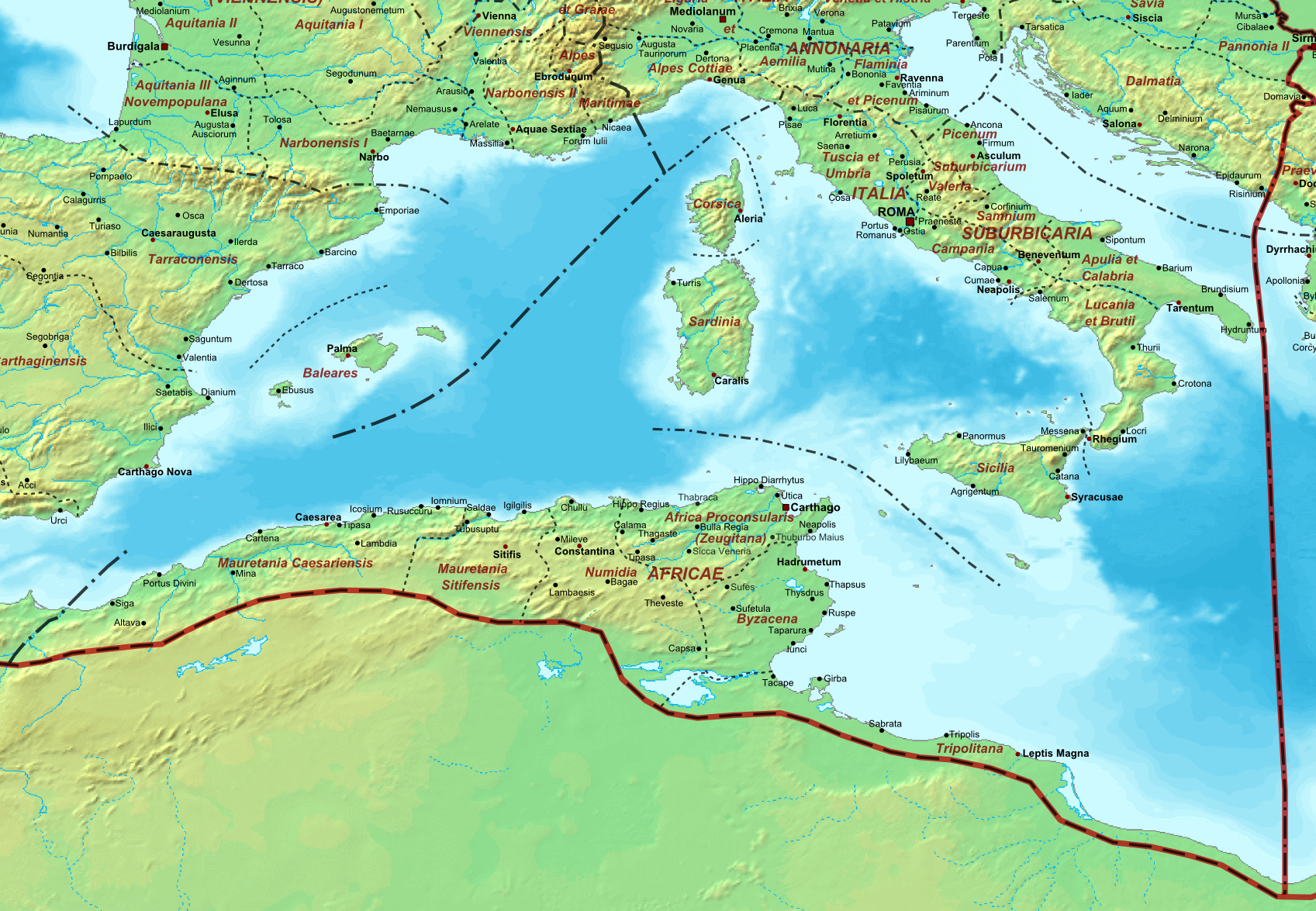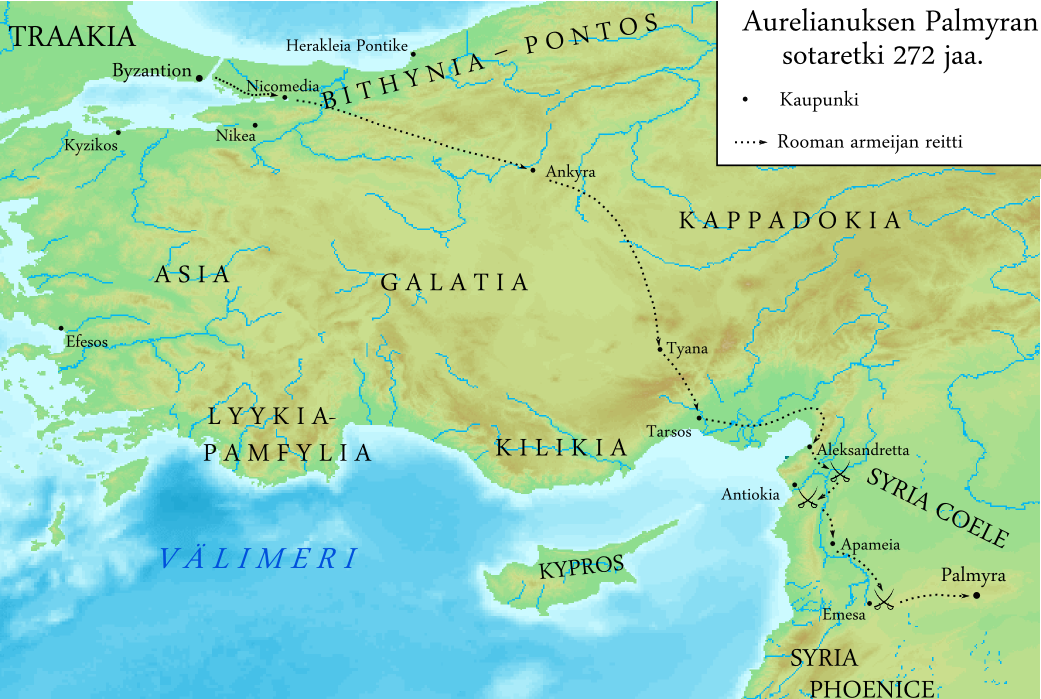|
Firmus (4th Century Usurper)
Firmus (died 375) was a Berbers, Berber Numidian prince and Roman usurper under Valentinian I. Firmus was the son of the Berber Jubaleni prince Nubel, a powerful Roman military officer, as well as a wealthy Christian. When Nubel died, Firmus killed his half-brother Zammac, who had illegitimately appropriated Nubel's wealth, and became successor to his father. Between 372 and 375, Firmus revolted against the ''Comes, comes Africae'' Romanus (count of Africa), Romanus, who was a supporter of Zammac. The misbehaviour of Romanus, who had neglected protection from African tribes to Roman cities that had refused the payment of bribes, had worsened the situation in Africa Province in the 360s. The revolt of Firmus against Romanus forced Valentinian to take action against both his officer and the African rebel. When Valentinian sent Count Theodosius (father of Theodosius I) to depose Romanus, Firmus initially professed his willingness to compromise, and appeared on the verge of reaching a ... [...More Info...] [...Related Items...] OR: [Wikipedia] [Google] [Baidu] |
Berbers
Berbers, or the Berber peoples, also known as Amazigh or Imazighen, are a diverse grouping of distinct ethnic groups indigenous to North Africa who predate the arrival of Arab migrations to the Maghreb, Arabs in the Maghreb. Their main connections are identified by their usage of Berber languages, most of them mutually unintelligible, which are part of the Afroasiatic languages, Afroasiatic language family. They are indigenous peoples, indigenous to the Maghreb region of North Africa, where they live in scattered communities across parts of Morocco, Algeria, Libya, and to a lesser extent Tunisia, Mauritania, northern Mali and northern Niger. Smaller Berber communities are also found in Burkina Faso and Egypt's Siwa Oasis. Descended from Stone Age tribes of North Africa, accounts of the Imazighen were first mentioned in Egyptian hieroglyphs, Ancient Egyptian writings. From about 2000 BC, Berber languages spread westward from the Nile, Nile Valley across the northern Sahara int ... [...More Info...] [...Related Items...] OR: [Wikipedia] [Google] [Baidu] |
4th-century Roman Usurpers
The 4th century was the time period from 301 CE (represented by the Roman numerals CCCI) to 400 CE (CD) in accordance with the Julian calendar. In the West, the early part of the century was shaped by Constantine the Great, who became the first Roman emperor to adopt Christianity. Gaining sole reign of the empire, he is also noted for re-establishing a single imperial capital, choosing the site of ancient Byzantium in 330 (over the current capitals, which had effectively been changed by Diocletian's reforms to Milan in the West, and Nicomedeia in the East) to build the city soon called Nova Roma (New Rome); it was later renamed Constantinople in his honor. The last emperor to control both the eastern and western halves of the empire was Theodosius I. As the century progressed after his death, it became increasingly apparent that the empire had changed in many ways since the time of Augustus. The two-emperor system originally established by Diocletian in the previous century fel ... [...More Info...] [...Related Items...] OR: [Wikipedia] [Google] [Baidu] |
375 Deaths
__NOTOC__ Year 375 ( CCCLXXV) was a common year starting on Thursday of the Julian calendar. At the time, it was known in Rome as the Year after the Consulship of Augustus and Equitius (or, less frequently, year 1128 ''Ab urbe condita''). The denomination 375 for this year has been used since the early medieval period, when the Anno Domini calendar era became the prevalent method in Europe for naming years. Events By place Roman Empire * November 17 – Emperor Valentinian I concludes an enduring peace with the Alamanni in Germany, then marches into Illyricum to repel an invasion of the Quadi and the Sarmatians on the Danube frontier. While negotiating with the Quadi, Valentinian, age 54, becomes so enraged that he dies in a fit of apoplexy at Brigetio (Hungary). Extreme cruelty has marked his 11-year reign, but he has also founded schools and provided physicians to serve the poor of Constantinople. * The Quadi accept an uneasy peace from Merobaudes (''Magis ... [...More Info...] [...Related Items...] OR: [Wikipedia] [Google] [Baidu] |
Gildonic War
The Gildonic War () was a rebellion in the year 398 led by ''Comes'' Gildo against Roman emperor Honorius. The revolt was subdued by Stilicho, the ''magister militum'' of the Western Roman Empire. Background Revolt of Firmus Gildo was a Berber by birth, the son of the immensely rich and prestigious Moorish lord Nubel.Edward Gibbon, ''The Decline and Fall of the Roman Empire'', (The Modern Library, 1932), chap. XXIX., p. 1,040 Under the reign of Valentinian I, Nubel's death resulted in a succession dispute between his sons, and Gildo's brother Firmus emerged victorious, after assassinating his brother Zamma. But when the governor of Africa, the unpopular count Romanus, disputed Firmus' claim, the latter used his influence, and the effects of the public outrage at Romanus' maladministration, to raise the province into open revolt, and only the swift response of the Imperial court and the energetic conduct of the general Theodosius prevented the province from becoming a ... [...More Info...] [...Related Items...] OR: [Wikipedia] [Google] [Baidu] |
Gildo
Gildo (died 398) was a Roman Berber general in the province of Mauretania Caesariensis. He revolted against Honorius and the Western Roman Empire ( Gildonic war), but was defeated and possibly killed himself or was assassinated. Etymology The name "Gildo" may have been the Ancient and Modern Berber root "GLD" or "agellid" which means chief or king. History Gildo was probably born in the 340s in Mauretania Caesariensis, a Romanised Berber by birth. Being a son of King Nubel (''regulus per nationes Mauricas''), he was brother to Firmus. His other brothers were called Mascezel, Mazuca, Sammac, and Dius. He had a sister named Cyria. According to a hypothesis of Stéphane Gsell that was later resumed and developed by Gabriel Camps, Nubel should indeed be identified with Flavius Nuvel, officer of the Roman army, commander of a cavalry unit, the equites Armigeri junior, who with his wife Nonnica (or Monnica) had a basilica built around the middle of the fourth century, housing ... [...More Info...] [...Related Items...] OR: [Wikipedia] [Google] [Baidu] |
Aurelian
Aurelian (; ; 9 September ) was a Roman emperor who reigned from 270 to 275 AD during the Crisis of the Third Century. As emperor, he won an unprecedented series of military victories which reunited the Roman Empire after it had nearly disintegrated under the pressure of barbarian invasions and internal revolts. Born in modest circumstances, most likely in Moesia, Moesia Superior, he entered the Roman army in 235 and climbed up the ranks. He went on to lead the cavalry of the emperor Gallienus, until Gallienus' Gallienus#Assassination, assassination in 268. Following that, Claudius Gothicus became emperor until his own death in 270. Claudius' brother Quintillus then ruled for three months, before Aurelian took the empire for himself. Aurelian was chosen Roman emperor by the Illyrians, Illyriciani as one of themselves. During his reign, he defeated the Alamanni after a devastating war. He also defeated the Goths, Vandals, Juthungi, Sarmatians, and Carpi (people), Carpi. Aurelian ... [...More Info...] [...Related Items...] OR: [Wikipedia] [Google] [Baidu] |
Firmus
According to the ''Historia Augusta'', Firmus (died 273) was a usurper of Syrian origin during the reign of Aurelian. The apparently contradictory accounts of his life and the man himself are considered by some historians to be a complete fabrication, perhaps based on the later Firmus. Historia Augusta account According to the ''Historia Augusta'' ("Firmus"), Firmus was a man of great wealth. He had his house fitted with square panels of glass, and owned a huge library. His commercial relationships involved Blemmyes, Saracens, and India. He had two elephant tusks, which later Aurelian projected to use as a basis for a statue to Jupiter and which were actually given as a present by Carinus. Physically, Firmus was noteworthy, being huge and very strong. Firmus was notably also a heavy drinker and could eat quite a bit. The ''Historia Augusta'' states that he once consumed an entire ostrich in one day, and even beat one of Aurelian's standard bearers and notorious drinkers in a ... [...More Info...] [...Related Items...] OR: [Wikipedia] [Google] [Baidu] |
Historia Augusta
The ''Historia Augusta'' (English: ''Augustan History'') is a late Roman collection of biographies, written in Latin, of the Roman emperors, their junior colleagues, Caesar (title), designated heirs and Roman usurper, usurpers from 117 to 284. Supposedly modeled on the similar work of Suetonius, ''The Twelve Caesars'', it presents itself as a compilation of works by six different authors, collectively known as the ''Scriptores Historiae Augustae'', written during the reigns of Diocletian and Constantine I and addressed to those emperors or other important personages in Ancient Rome. The collection, as extant, comprises thirty biographies, most of which contain the life of a single emperor, but some include a group of two or more, grouped together merely because these emperors were either similar or contemporaneous. The true authorship of the work, its actual date, its reliability and its purpose have long been matters for controversy by historians and scholars ever since Hermann ... [...More Info...] [...Related Items...] OR: [Wikipedia] [Google] [Baidu] |
De Imperatoribus Romanis
''De Imperatoribus Romanis'' (''DIR'') is an online peer-reviewed encyclopedia about the emperors of the Roman Empire, including the Byzantine Empire. It was established in 1996 by Michael DiMaio, and hosted at Salve Regina University. The site has been defunct since June 2023, but it is still available in the Internet Archive. The ''Cambridge Companion to the Age of Constantine'' says that its articles "offer sound overviews and a regularly updated bibliography". References External links * Archived Second website Internet properties established in 1996 American online encyclopedias Byzantine studies Prosopography of ancient Rome {{online-encyclopedia-stub ... [...More Info...] [...Related Items...] OR: [Wikipedia] [Google] [Baidu] |
Rusuccuru
Dellys (, Berber: Delles) is a small Mediterranean town in northern Algeria's coastal Boumerdès Province, almost due north of Tizi-Ouzou and just east of the Sebaou River. It is the district seat of the daïra of Dellys. The town is 45 km from Tizi Ouzou, 50 km from Boumerdès (the provincial capital), and about 100 km from the capital Algiers. It is notable for its Ottoman-era Casbah, two colonial-era lighthouses (marking Cape Bengut), and some beaches; the principal activities of the area are fishing and farming. As of 2008, the population of the municipality is 32,954. Geography The Dellys area presents a natural harbour in the form of a small bay sheltered on the west and northwest by the peninsula of Sidi Abdelkader (largely occupied by the town cemetery, along with a small lighthouse). This peninsula is the seaward extension of the mountain of Assouaf, looming over the town. Around this harbour grew the Casbah of Dellys. During the colonial peri ... [...More Info...] [...Related Items...] OR: [Wikipedia] [Google] [Baidu] |




